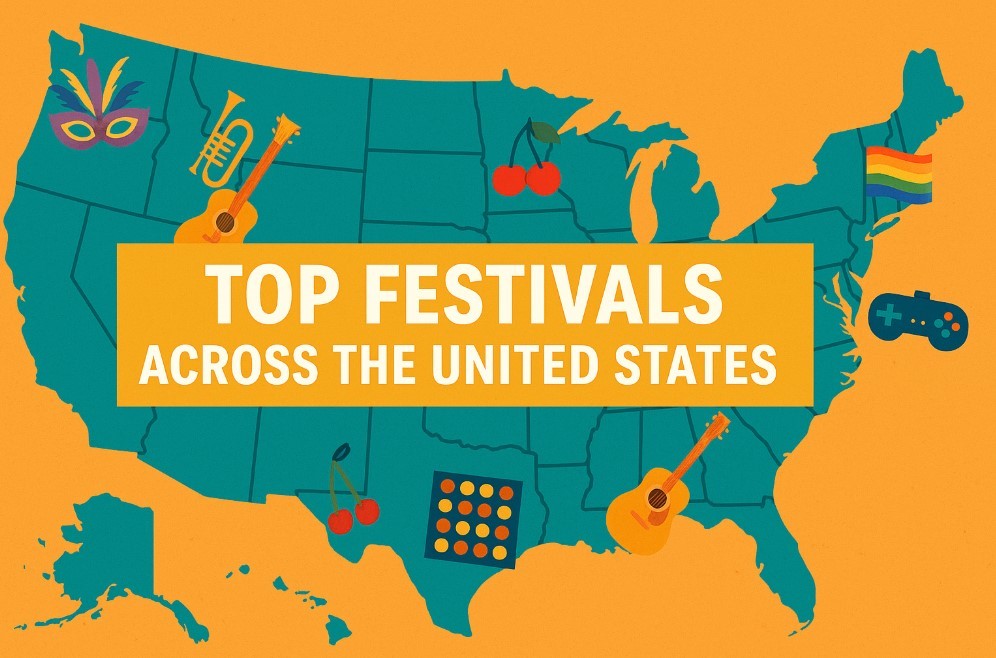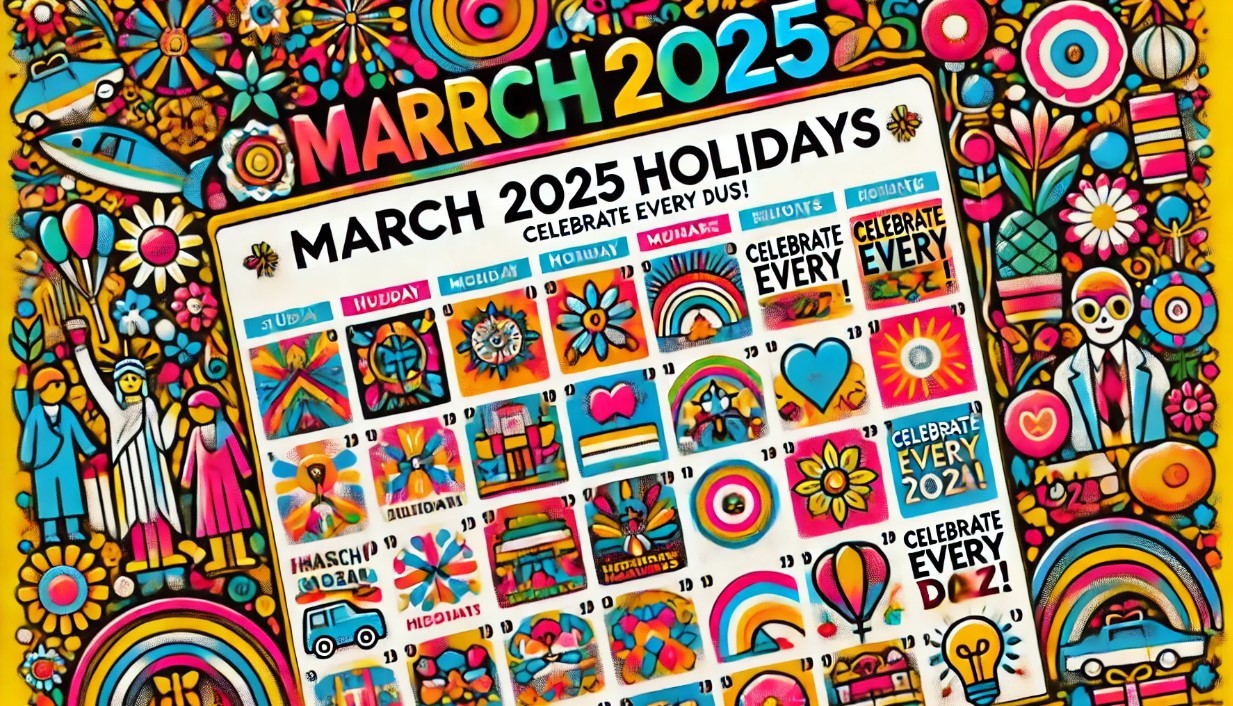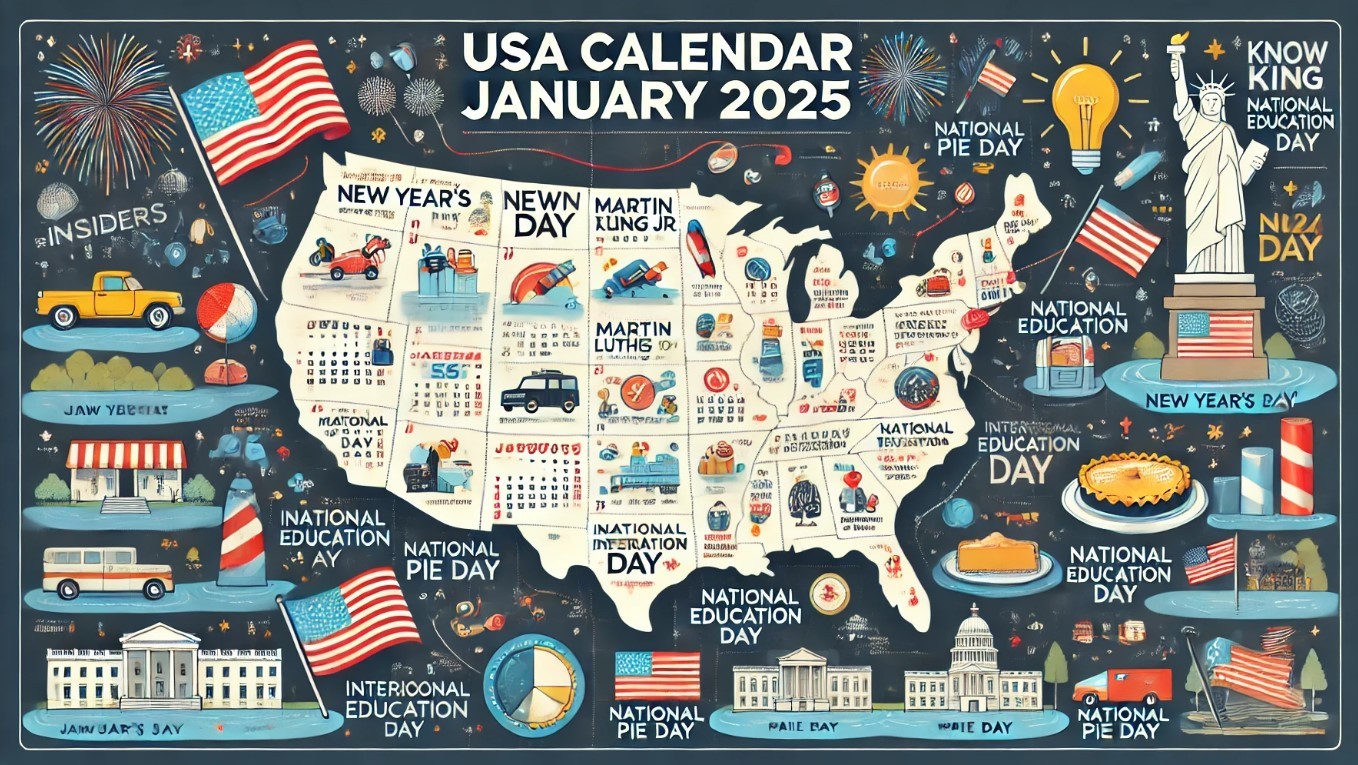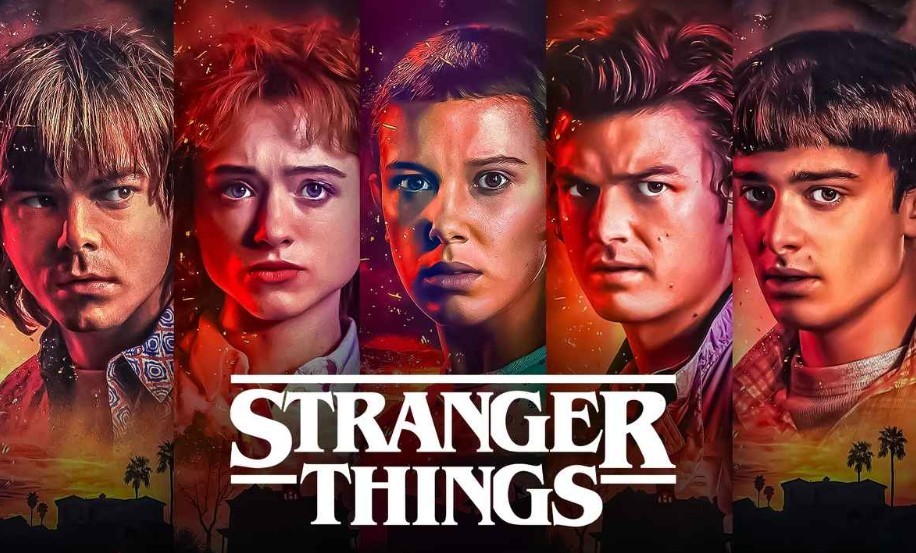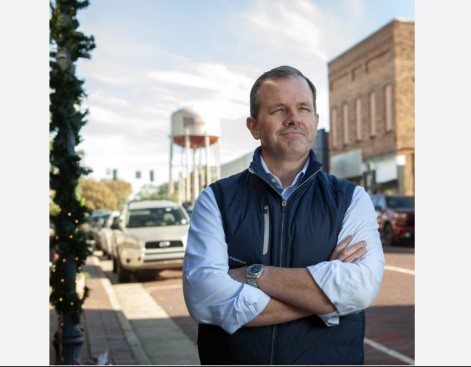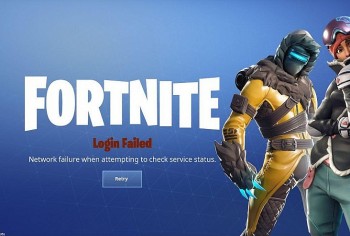March US Calendarin Every Year: Full List of Holidays and Celebrations
♦ US Calendar in April with the Full Holidays and Celebrations
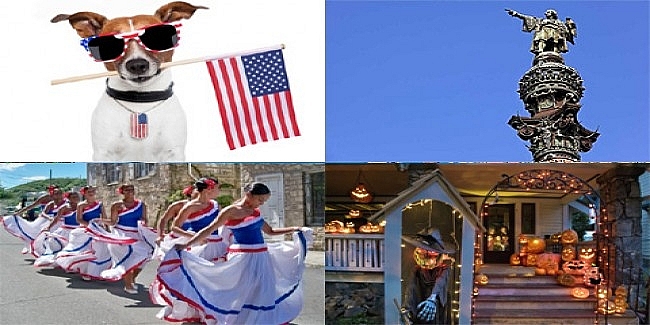 |
| Holiday Calendar for US on March for Every Year |
After a season of lounging about (literally), Mother Nature begins to bloom and display her hues during the month of March, which runs from the start of spring until Daylight Savings Time.
Welcome to Women's History Month, a time to honor and recognize the significant role that women have played throughout American history, as well as spring and all that it has to offer.
Whether it's a Barbie-themed day or St. Patrick's Day celebration, there's bound to be a day that fits your schedule.
Pisces and Aries are the signs associated with March. Born between February 19 and March 20, you are a Pisces, which is generally associated with empathy, creativity, and dreaminess. Born between March 21 and April 19, you are an Aries, which is generally associated with being bold, competitive, and extroverted.
The March calendar for the United States is a one-page monthly calendar that includes March holidays.
March Weekly Holidays and ObservancesNational Invest In Veterans Week (March 1-7) International Women's Week (Week of March 8) Endometriosis Awareness Week (First full week of March) National Procrastination Week (First two weeks in March...or whenever it's convenient) Read an E-Book Week (First full week of March) Girl Scout Week (Week of March 12) National Introverts Week (Third full week of March) National Physicians Week (March 25-31) |
Full List of March Holidays and Observances in The Unites States
Mar. 1
- Justin Bieber's Birthday
- Mardi Gras
- National Pancake Day
- National Peanut Butter Lover's Day
- National Pig Day
- St. David's Day
- World Compliment Day
Irish American Heritage Month
Observances on the First Day of Irish American Heritage Month: Not every day is a public holiday. While businesses, schools, and government and public offices are open during this month-long annual observation, they may host outreach initiatives and special events to mark the occasion.
Women's History Month
Women's History Month is observed in March each year. In the United States, March has been set aside to celebrate women's achievements and their contributions to history, culture, and society since 1987. Women's History Month celebrates women in general, including those who went before us and paved the path for the current generation of American women to carry on the fight for equality.
On March 8, which is also International Women's Day, we commemorate Women's History Month.
Women's History Month originated precisely from Women's History Week, which was first observed in 1978 and was coordinated by the Sonoma, California, school district. The celebration included lectures about strong women, essay competitions, and a parade.
The idea took off quickly in a lot of communities and educational settings, and on March 8, 1980, President Jimmy Carter declared the week to be National Women's History Week. The following year, a resolution establishing Women's History Week as an official yearly national holiday was approved by Congress. After the National Women's History Project successfully petitioned Congress to expand the commemorations to the entire month of March, the first Women's History Month was observed in 1987.
The resolution asked the President-in-waiting to declare March to be Women's History Month each year. These proclamations are a reflection of the many achievements women have made in American history.
One of the best ways to honor Women's History Month is to learn about the many achievements of women who have paved the way for later generations in a variety of industries. You should also educate others about these women's lives and contributions so that they may be treated with the dignity that they deserve.
There are usually a number of activities held during Women's History Month. To meet people who share your interests and gain more knowledge about prominent women from both the past and present, find out if there are any in your area and attend the ones that pique your interest.
Mardi Gras Day
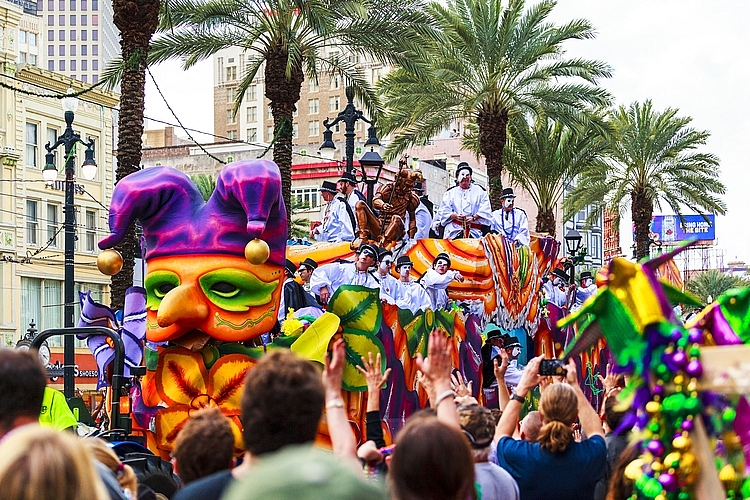 |
| Mardi Gras festivals often feature parades and large crowds in the United States. |
On Shrove Tuesday, also known as Mardi Gras, most businesses and schools are closed in four states.
Mardi Gras is on the Tuesday before Ash Wednesday, also known as Carnival, Fat Tuesday, or Shrove Tuesday. In honor of the grand parades and festivities, several American cities have declared it a holiday and closed their businesses and schools. Other states function normally.
Since the French word for fat is gras, Fat Tuesday is also known as Mardi Gras. On this day, people would indulge in heavy meals and alcoholic beverages prior to fasting for 40 days before Easter.
The Catholic holiday of Mardi Gras originates from Roman Pagan spring rituals and medieval Europe in the 17th century.
It was brought to America in 1699 by Jean Baptiste le Moyne Sieur de Bienville, who named a town close to New Orleans, Pointe du Mardi Gras. This day was first observed nationally in 1703.
Street parties, masquerade balls, and sumptuous feasts were the means of celebration in New Orleans and other French colonies.
In 1827, a group of students dressed up and danced in New Orleans after witnessing Mardi Gras in Paris. The first Mardi Gras was observed in 1837.
As the celebrations got bigger and more extravagant, krewes started planning Mardi Gras balls and parades. In 1857, the Mistick Krewe of Coms organized the first parade featuring ornate floats and marching bands. There are open Mardi Gras krewes and exclusive ones. The two most well-known krewes in New Orleans are Krewe of Rex and Krewe of Zulu.
For Mardi Gras, costumes in the colors purple, green, and gold are recommended. During festivities, justice, religion, and strength permeate New Orleans.
In the past, masks were worn by Mardi Gras attendees to take part in the festivities. Float participants are required to wear masks, and members of high society and Krewes must either paint their faces to conceal their identities or wear masks.
The most well-known Mardi Gras tradition is wearing beads and other trinkets. To gather as many of these treasures as possible, many people bring bags. Glass beads were thrown during the first Mardi Gras parades; today, plastic beads are used instead. Some women and girls are encouraged to flash floaters in order to receive extra beads.
In New Orleans, fruits, pecan nuts, and icing in shades of purple, green, and gold are commonly used to make King Cake. The individual who receives the piece with the plastic infant is required to bring the King Cake to the events the following year.
St. David's Day in the United States
Many Americans of Welsh heritage celebrate the life of St. David, the patron saint of Wales, on March 1. It's also a time for people to remember and celebrate their Welsh heritage. On this day, the Welsh flag is frequently flown and leeks or daffodils pinned to garments during festivities.
St. David's Day is not observed as a holiday in the United States. Given that it's a holiday, certain businesses, educational institutions, and civic associations may have special events scheduled.
Saint David is the patron saint of Wales. The Welsh culture holds great significance for him, despite the fact that not much is known about his personal background. For Americans of Welsh descent, St. David's Day was officially designated as a national holiday in 2003. The Empire State Building was floodlit in the Welsh colors of red, green, and white on March 1st of that year.
Wednesday, Mar. 2
- Ash Wednesday
- Dr. Seuss’s Birthday
- National Egg McMuffin Day
- National Old Stuff Day
- National Read Across America Day
Ash Wednesday
The 40-day Lenten season begins on Ash Wednesday, which is observed 46 days before Easter Sunday. On this day, which is also known as the Day of Ashes, Christians and Catholics emphasize prayer and penance. Since there isn't a holiday, operations continue as usual.
What is Ash Wednesday?
This day, which is determined by the phases of the moon, marks the beginning of Lent, a time when people should give up indulgences and focus on repentance, fasting, and reflection on their sins. This is not observed on Sundays. Its significance stems from the time Christ had to pass in the desert during his fast, when he was tempted by the devil. As a result, in a ritualistic attempt at self-purification, people are urged to reflect on what Jesus Christ's struggle meant for him and to attempt to emulate it.
Often, the ashes for Ash Wednesday ceremonies are made from the burned palm branches from Palm Sunday the previous year.
Those who wish to atone for their transgressions and purify their hearts are the ones who are anointed with ash. Ashes are a representation of death and atonement.
When did Ash Wednesday start?
Easter has nothing to do with the origins of the Day of Ashes, which dates back to the time of the apostles. Legend has it that the first official commemoration of this day took place at the First Council of Nicaea in 325 CE. It was a day set aside for baptisms and penance by sinners.
Fasting was considered an extreme practice during that era. Repentants were only allowed to eat one meal a day, in the evenings, and nothing that was considered ostentatious at the time, like meat or even eggs, could be served at this meal. These days, most people just decide to give up meat on one Friday each week, and fasting laws are more lax.
Parishioners now use ashes to draw a cross on their foreheads as a symbol of their devotion to Jesus Christ.
Strangely, the Bible makes no mention of Ash Wednesday or Lent, and nowhere does it say that Catholics must observe this tradition. Many passages in The Book that use ashes as a symbol of fasting and repentance are thought to be the source of the traditions surrounding the Day of Ashes. It wasn't until the 1970s that American congregations began to observe Ash Wednesday more frequently.
During services, priests usually give a speech in which they encourage attendees to confess their sins and ask for forgiveness, emphasizing meditation and penance.
After placing the ash cross on worshippers' foreheads, priests will recite a variant of the verse "From dust you came, and to dust you shall return". These are meant to be sobering remarks that make people face their own mortality.
Texas Independence Day
Texas Independence Day commemorates the 1836 Declaration of Independence on March 2. This, signed by 59 Texas delegates, declared Mexican Texas an independent republic within Mexico. Texas considers it a Partial Staffing Holiday, so shops and schools are open but with fewer employees.
Texas Independence History
Six nations have contested the area that would become Texas since the 16th century. Texas joined Mexico after Mexico gained independence and annexed it.
Texas was large and sparsely populated, so the Mexican government encouraged American homesteaders to settle there. Following 300 families to Texas, Stephen Austin founded the first American colony in 1825. As new settlers arrived, the American population quickly surpassed the Mexicans. This caused conflict between the Mexican government and Texan immigrants.
Tensions rose after the 1826 Freedonia Revolt, which forced the Mexican government to stop letting Americans into Texas. The government denied Stephen Austin's Texas statehood request. Despite these orders, Texans declared statehood, resulting in Austin's imprisonment.
Mexican dictator Santa Anna took power in 1827. He ordered Gonzales residents to surrender their weapons to quell the Texan uprising. The Texans fired on the Mexican troops as they entered town to collect the cannon. After this invasion, Sam Houston led an American army and established a temporary state government.
Alamo residents included Texan soldiers who wanted to fight for their freedom. Colonels Travis and Bowie had 140 troops for the battle when David Crockett arrived from Tennessee with 14 men. They fought the 3000-man Santa Anna Mexican army for two weeks. Texas combatants numbered 185 after some entered the Alamo in March. The following day, March 2, Texas declared independence from Mexico.
On March 6, the Mexican army invaded the Alamo and killed most American soldiers. The revolution began after the Alamo fell, and six weeks later Sam Houston led a large Texan army into Mexico and defeated the Mexican Army and captured Santa Anna. Revolutionaries shouted "Remember the Alamo." Santa Anna was threatened with execution for not recognizing Texas' independence. He fled to Mexico after granting Texas independence.
After ten years of independence, Texas annexed the US in 1845, becoming the 28th state, due to Mexican incursions.
Texas July 4th Celebrations
Texans celebrate Independence Day with parades and fireworks. Most people have family barbecues. Others visit Texas Revolution battle sites to learn about the state's independence. State festivals feature chili cooking competitions and combat reenactments.
On this day, most homes and businesses fly the Texas Lone Star Flag, a symbol of the revolution.
Read Across America
Dr. Seuss' birthday, March 2, is National Read Across America Day. This day encourages parents and teachers to read with kids. National Education Association founded and hosts day.
Read Across America history
The NEA proposed a national reading day in 1997. They wanted American kids to enjoy reading. Read Across America Day began March 2, 1998. Schools and libraries have celebrated it annually since.
Parents and teachers should take kids to literary events or have special reading activities in class on the day because reading improves school performance.
Read Americawide
Schools, libraries, and hospitals will host group readings or invite writers to read to kids on this day.
Kids promise to read a certain number of books a year for prizes. Book fairs and mobile libraries let students pick new books.
The National Education Association's website helps teachers plan reading activities. Selected schools host Read Across America Week.
| This day was chosen to host Read Across America Day because it was the birthday of the famous author, Theodore Seuss Geisel, better known as Dr. Seuss. Dr. Seuss was also a poet and cartoonist and his famous works include Green Eggs and Ham and The Cat in the Hat. |
Mar. 3
- National Anthem Day
- National I Want You to be Happy Day
- National If Pets Had Thumbs Day
- World Wildlife Day
National Anthem Day
Oh Say Can You See that National Anthem Day on March 3rd commemorates "The Star-Spangled Banner"'s 1931 approval as the US national anthem. "The Star-Spangled Banner," a symbol of American patriotism, inspires young and old to be proud of their country. As fascinating as the US's history is the National Anthem's creation.
History of National Anthems
The first version of "The Star-Spangled Banner," the US national anthem, was Francis Scott Key's 1814 poem "The Defence of Fort M'Henry". On March 3, 1931, President Herbert Hoover signed a bill making "The Star-Spangled Banner" the national anthem.
Before 1931, the US had no national anthem, but official events often included "Hail, Columbia!" and "My Country, 'Tis of Thee."
The Georgetown Light Field Artillery included prospective poet and attorney Francis Scott Key. Key's friend was captured by the British in 1812, during the US-UK war. After the Brits agreed to let Key negotiate for his release, he rushed to Baltimore, but they wouldn't let him leave until the British army shelled Fort McHenry.
On September 13, 1814, the British bombarded Fort McHenry for 25 hours with over 1500 cannon shots during a severe thunderstorm. According to reports, Philly heard the booms. Scott Key witnessed this attack from a ship eight miles away. British forces fled after failing to destroy the fort for a day. Francis Scott Key was amazed to see the American flag on Fort McHenry in the morning. This inspired him to write "The Defence of Fort M'Henry," a poem about the American flag and nation.
Scott Key's brother-in-law found that the poem's lines matched John Stafford Smith's music, so it was published in newspapers as "to the tune of The Anacreontic Song". In the 19th century, the song became known as "The Star-Spangled Banner."
Throughout the 19th century, "The Star-Spangled Banner" was the official anthem of many US military branches. President Woodrow Wilson ordered the song played at military events in 1916. Veterans of Foreign Wars petitioned for "The Star-Spangled Banner" to become the US national anthem in 1930. The Star-Spangled Banner became the National Anthem on March 3, 1931, when Congress passed and President Hoover signed an act.
As the National Anthem, "The Star-Spangled Banner" must be performed standing. The military salutes the flag while everyone else places their right hand over their heart during the national anthem.
The United States National Anthem Lyrics
Need a refresher on the words to "The Star-Spangled Banner"? While there are four verses in total, only the first verse is usually sung during events. Here are the lyrics for the first verse of the American National Anthem:
O say can you see, by the dawn's early light,
What so proudly we hailed at the twilight's last gleaming,
Whose broad stripes and bright stars through the perilous fight,
O'er the ramparts we watched, were so gallantly streaming?
And the rocket's red glare, the bombs bursting in air,
Gave proof through the night that our flag was still there;
O say does that star-spangled banner yet wave
O'er the land of the free and the home of the brave?
How to Celebrate National Anthem Day
This day is all about bringing the nation together around patriotic values, the American flag, and the history and principles that it stands for.
Try to memorize the other three verses of "The Star-Spangled Banner" since most people only know the first one!
Visit the Star-Spangled Banner National Historic Trail to learn more about the background of the national anthem. a hiking path that crosses Columbia, Maryland, and Virginia.
Missouri Compromise Day
Despite rising slavery tensions, Congress passed the Missouri Compromise on March 3, 1820. Maine was admitted free and Missouri as a slave state to balance the Senate. Slavery was banned north of 36o 30'. The Missouri Compromise expired in 1854.
The date is US history, not a holiday.
History
In 1818, slave-holding Missouri sought statehood. This would be the first state west of the Mississippi, and legalizing slavery there would further divide the nation.
Abolitionist Northerners opposed slavery in new states because it would upset the free-slave balance. Southerners said new states should decide on slavery.
In February 1819, Northern Congressman James Tallmadge proposed two slavery-restricting amendments to Missouri's request. Southern senators objected. The Senate was evenly split at 11 states per section, and recognizing Missouri as a slave state would benefit the South.
Missouri reapplied for statehood after the Senate deadlock in 1819. Maine sought free statehood. House Speaker Henry Clay proposed making Missouri a slave state if Maine became free. The united statehood bill was amended in February 1820 to ban slavery in all new territories north of Missouri's southern boundary's imaginary 36o 30' latitude.
President Monroe signed the law on March 6.
Missouri's issue was resolved, but slavery's future in the US was not. The North opposed the compromise because it allowed new states to allow slavery, while the South thought it gave Congress too much power to regulate slavery.
Slavery in new states was controversial throughout Westward Expansion.
The Kansas-Nebraska Act, passed in 1854 to admit Kansas and Nebraska, let settlers decide on slavery. This overturned the Missouri Compromise and legalized slavery north of 36o 30'. That sparked violence and the Republican Party under Lincoln.
Dred Scott v. Stanford invalidated the Missouri Compromise in 1857, and Congress lost the right to ban slavery in any state. Contributed to Civil War.
Mar. 4
- National Day of Unplugging
- National Employee Appreciation Day
- National Grammar Day
- National Hug a G.I. Day
- National Sons Day
- World Obesity Day
Employee Appreciation Day
The first Friday in March is Employee Appreciation Day, when employees are thanked for their dedication. It's also a great chance to improve employee-employer relations.
Although businesses and schools are open and this day is not a public holiday, many employers give their employees time off to spend with coworkers.
We Celebrate Employee Appreciation Day Because...
Managers should compliment their employees' best qualities now. Since employees respond well to superior encouragement, this attitude at work boosts productivity and job satisfaction. It also helps companies retain key employees.
Past Employee Appreciation Days
This day debuted on a calendar in 1995. Bob Nelson, the publisher of Workman Publishing and founder of Recognition Professional International, may have created this holiday to teach business owners about employee satisfaction.
In the US, more businesses are hosting events on the holiday since then.
How to Celebrate Employee Appreciation Day
Businesses can thank employees in many ways. One popular idea is to take everyone out to breakfast or lunch to get to know each other.
Some companies give employees part of the day off because schedule flexibility can boost productivity. Another popular way to show gratitude is with gifts. Gift cards or small office improvements can boost morale.
Some companies plan a day trip to play sports, bowl, or have a barbeque for team-building.
Day of Grammar,
Every March 4, we celebrate National Grammar Day to promote proper writing and speaking. It's important to have a positive self-image because how we write can affect how others see us. Even though language is everywhere, many of us make grammar mistakes. National Grammar Day is the perfect excuse to practice grammar and indulge your language nerd side.
National Grammar Day history
Martha Brockenbrough, author of "Things That Make Us [Sic]" and founder of the Association for the Advancement of Good Grammar, founded National Grammar Day in 2008. She created the day's slogan using word and grammar play: "March forth on March 4 to talk well, write well, and help others do the same!"
Brockenbrough said she created National Grammar Day to help her students with grammar in a fun and encouraging way in an interview.
President George W. Bush wrote to support National Grammar Day in its first year.
Grammar is the language system that ensures we can all speak clearly and understand each other, contrary to popular belief. Grammar is essential to communication because it can change the meaning of a phrase. For instance, "Let's eat, grandma!" and "Let's eat grandma!" have very different meanings. Everything is different because of the comma. Thus, occasional poor grammar can cause miscommunication.
Some Common Grammar Errors
We've all made grammar mistakes. Try to avoid these common ones in your writing and communication:
1 - Your vs You're. Many people get these two confused. But the difference is that one means you own something "Your Backpack" and the other means you are something "You're fast".
2 - They're vs. Their vs. There. The first one means "They are", the second refers to something owned by a group "their dog", and the last references a point in space, or a place "There it is".
3 - Affect vs. Effect. To affect means to change something, and effect refers to the change itself, the result.
4 - Its vs. It's. Its is a possessive, referring to something that is owned. It's is a contraction of "it is".
National Grammar Day Activities
Grammar is present all around us. It doesn't have to be a hassle to observe National Grammar Day. You can practice your grammar and vocabulary while relaxing with a good book, magazine, or newspaper.
If you have children or work with children, use this opportunity to teach them that grammar is fun. There are a ton of enjoyable grammar exercises available online to turn language learning into a game.
World Obesity Day
The annual March 4th World Obesity Day raises awareness of the global obesity epidemic and the health risks of being extremely overweight. To end prejudice against overweight people and change society's view of obesity, the World Obesity Federation organized the day. It also wants to highlight the social, environmental, and medical causes of obesity and how to fix them.
World Obesity Day history
The World Health Organization and Lancet Commission on Obesity helped the World Obesity Federation found World Obesity Day. The first occurred in 2015.
To raise awareness of obesity, World Obesity Day features a different topic each year. 2016's theme was "Treat obesity now and prevent the consequences later," as was 2017. World Obesity Day 2018 focused on global weight stigma.
The Global Obesity Federation says obesity is still stigmatized. They want to raise awareness of obesity's causes and treatments. They are working globally to change laws and prioritize obesity as a health issue.
Obesity rates have steadily increased, and the WHO estimates 650 million obese adults worldwide in 2016. The US has one of the highest adult obesity rates in the world, 42.4% (as of 2020). It is considered an epidemic in America and causes many deaths by increasing the risk of diabetes, cancer, and heart disease.
World Obesity Day promotes weight and lifestyle management tools to prevent obesity from becoming a serious and sometimes fatal condition. Everyone, regardless of gender, age, or social status, can become obese. Discrimination against obese people is common. Destroying stigma and spreading knowledge about the illness and its treatments is crucial.
Fortunately, some small lifestyle changes can prevent obesity. Avoid processed foods and eat lots of fruits and vegetables. Even 30 minutes of daily exercise, like a walk, can make a big difference.
World Obesity Day: What to Do?
Learn about obesity and its challenges. Make this a top priority. Finally, try to change your sometimes prejudiced views of obese people and be more welcoming. You can then convince family and friends to follow suit.
Today should remind you to stay healthy. Prepare a healthy lunch at home and run or walk in the park. Maybe finally join the gym!
Casimir Pulaski Day in the United States
Some states close schools, libraries, banks, and courts on Casimir Pulaski Day.
Commercial businesses and federal and state offices usually remain open. If one plans to take public transportation in Illinois on Casimir Pulaski Day, consult with the local transit authority about timetable changes.
Kazimierz Puaski (Casimir Pulaski) is credited with promoting American independence. He was "Founder of American Cavalry." His birthdate was March 4, 1747, in Warka, Poland. His father was a founding member of the Confederation of Bar, which rebelled against Russian rule over Poland in 1768. After his father died, Casimir took over military command and became famous for his intelligence. He was exiled quickly after being charged with conspiring to kill the monarch.
Franklin met Pulaski in Paris and invited him to join the North American American Revolution. George Washington's army welcomed him immediately. His first battle with British forces was the Battle of Brandywine on September 11, 1777. In exchange for his daring attack at Brandywine, which helped the American army escape the British, he was given a brigadier general's commission and control over all American cavalry.
Pulaski's troops freed Charleston from British siege in 1779. After that, he joined French allies in Savannah. Pulaski was hit by a cannonball while exhorting the troops after the French attack failed. He died on October 11, 1779, and was buried at sea. Congress passed a joint resolution granting Pulaski honorary US citizenship in 2009; the president signed it. The law was signed by President Obama on November 6, 2009.
Mar. 5
- National Absinthe Day
- National Cheese Doodle Day
- St. Piran’s Day
Mar. 6
- National Dentist's Day
- National Dress Day
- National Frozen Food Day
- National Oreo Cookie Day
Dred Scott Case
On March 6, 1857, the U.S. Supreme Court held that black individuals, whether free or enslaved, did not have the right to American citizenship. They had fewer rights than other Americans.
Dred Scott, a slave moved from Missouri to free states by his owners, sued for his freedom in Missouri.
This historic event is not a holiday.
Scott, born into slavery in 1799, migrated with his owner Peter Blow to Alabama in 1818 and Missouri in 1830, both slave states.
Dr. John Emerson bought Scott in 1832 after Blow's death and moved him to Illinois, a free state, then Wisconsin, where the Missouri Compromise prohibited slavery. Scott married Harriet Robinson and gave her to Emerson.
Dred and Harriet Scott remained in Wisconsin as hired slaves in 1837. Emerson brought slavery into a free state, violating the Missouri Compromise. Emerson then married Eliza Sanford in Louisiana, a slave state. Scotts joined their masters in Louisiana after the wedding.
Why they didn't sue for freedom while entering Louisiana, where slaveholders lost their rights if they carried their slaves to free states for extended periods, is unclear.
Once Emerson died in 1843, his wife inherited the Scotts and leased them as slaves. Dred Scott sued after being denied freedom in 1846.
The Scotts sued for their freedom in 1846 in the St. Louis circuit with legal and financial support from their church, abolitionists, and Charlotte Blow, Peter Blow's daughter. One statute allowed black people to sue for unjust enslavement, while the other specified that any slave brought to free territory automatically became free and could not be re-enslaved.
Since the Missouri courts had heard similar cases and the Scotts had lived in free states, victory looked assured. In 1847, the court granted a retrial after a witness gave false testimony.
The correct witness testified in 1850 at the Supreme Court of Missouri that she had leased the Scotts from Emerson. Scotts were acquitted. Emerson appealed, and in 1852, the Missouri Supreme Court reversed the 1850 verdict, ruling that the Scotts were still enslaved because they had not sued for freedom in a free state.
In 1853, Dred Scott sued Emerson's brother, John Sanford, for transferring the Scotts' ownership. At the 1854 Dred Scott v. Sanford trial, the court used Missouri law to keep Scott a slave. Sanford won
Dred Scott appealed to the U.S. Supreme Court, which filed Dred Scott v. Sandford. By then, notable abolitionists and politicians supported Scott. John Sanford was used as a front and enabled himself to be sued and represented by pro-slavery supporters during this trial.
Justice Roger Taney, who opposed slavery but supported state rights, presided. Consequently, he ruled that African Americans, freed or enslaved, had no rights as citizens and could not sue in federal court. He also claimed the Missouri Compromise was unconstitutional because Congress had no jurisdiction to stop slavery.
Dred Scott lost 7-2 on March 6, 1857.
After the US supreme court judgment, Eliza Emerson married an abolitionist who sold Scott and his family to Taylor Blow, son of Peter Blow, after discovering his wife owned a family of slaves. Taylor liberated the Scotts in May 1857.
Abolitionists protested the Supreme Court's decision, believing it was an attempt to end the slavery discussion. This intensified the North-South divide over slavery and eventually to Southern secession and the American Civil War.
National Day of Unplugging
The First Friday of March is National Day of Unplugging, when people are encouraged to disconnect for 24 hours. We're always online thanks to our smartphones, computers, TVs, and WiFi connections. As a result, we sometimes neglect the real world to document our lives on social media. National Unplugging Day is the first step to becoming less tech-dependent, a chance to relax, read, go outside, and socialize without our phones.
The non-profit Reboot and the Sabbath Manifesto created National Day of Unplugging in 2009 because they realized that smartphone use could harm mental health. By going without electronics and phones for a day, they hope to inspire people to slow down in a busy world and realize that technology is not necessary.
The first National Day of Unplugging events were small groups of people having tech-free dinners, but now partners around the country and world sponsor live unplugged events every year. Nowadays, the Unplug Collaborative oversees the unplugging movement.
The Benefits of Unplugging
Computers and smartphones provide many benefits. We have access to a lot of knowledge thanks to our constant internet connection, and there are apps for everything to simplify our lives. We can even contact distant relatives. Unfortunately, there are also drawbacks. We minimize social interactions, worry about social media appearance, and sleep less. Technology addiction is real! Here are some benefits of putting our phones away for a day:
Stress decreases. We feel compelled to interact with people and social media when we spend all our time on our phones. Watching people post photos of their lives on Facebook and Instagram may make us feel like we must live up to unrealistic standards. Take a break from everything to appreciate life, focus, and reduce stress.
It benefits health. Smartphones cause poor posture and back pain for most people. Tech- Neck pain is a serious issue caused by phone use. Picture a day without headaches or neck pain!
It improves mental health. As mentioned, social media can make us feel inferior, causing envy, loneliness, and melancholy. Doomscrolling—constantly reading negative news online—is unhealthy. Taking a break from social media can help us gain perspective, set limits, and boost self-esteem.
How to Join National Unplugging Day
Starting with turning off all electronics for a day is essential. Turn off your laptop and phone at night and do not use them again until the next evening (or longer!).
Then, your day's possibilities are nearly endless. Meet up with friends ahead of time and spend the day unplugged but socializing. Take a walk, cook a big meal, catch up on chores, read your dream book, or go on a date.
National Dentists Day
Our health depends on them, but visiting them makes us nervous. On March 6, we celebrate National Dentist's Day to honor dentists who keep our teeth. Good oral hygiene is essential for a long, healthy life, but dentist visits are scary. We can keep eating sweets—moderately!
History of Dentist Day
Patients can thank their dentists and dentists can promote dental health on National Dentist's Day. Its origin is unknown. National Dental Day may prove that visiting the dentist isn't scary and that good dental hygiene is worth it!
As everyone knows, dentists diagnose, prevent, and treat oral diseases. Did you know medieval barbers were the first dentists? Guild barbers were more educated dentist-barbers because they performed complex procedures. Lay barbers extracted teeth and performed basic surgery.
The French invented dentistry in 1728. American dentists joined European immigrants by 1760. America pioneered forensic dentistry. The American Dental Society was founded in 1859 and the DDS degree in 1840.
Modern medicine relies on dentists. Our oral health impacts our overall health. Many of us fear the dentist, but leaving with clean teeth, fixed cavities, and no pain is worth it. If you floss, brush, and avoid junk food, your dental checkup should be fine!
Celebrate National Dentist Day
We recommend scheduling a dental checkup today if you've been putting it off. Realize it's safe and feel better!
Thank your dentist with an email, card, chocolates, or flowers for keeping you healthy. Follow your dentist's advice and keep your teeth healthy to reward them today.
Encourage friends and family to visit the dentist, and teach your kids to brush their teeth and that the dentist is not scary.
Send a smiley photo with #NationalDentistsDay to promote your dentist.
Mar. 7
- National Be Heard Day
- National Cereal Day
Mar. 8
- Commonwealth Day
- International Women's Day
- National Proofreading Day
International Women's Day
March 8 is International Women's Day. It celebrates women's social, political, economic, and cultural achievements and promotes gender equality. Despite a holiday abroad, US businesses and schools are open.
Purple and Venus represent International Women's Day. In 1908, the UK Women's Social and Political Union designated Purple, Green, and White as women's rights colors. Purple represents justice, dignity, and hope, while White purity was removed because it was outdated.
IWD History
During the industrial revolution, population growth and precarious jobs prompted the 1900s fight for a day to celebrate women. Mistreated people fought for their rights as radical ideologies grew.
Labor movements protested unrest and depression. 1908 saw 15,000 New York women march for pay and voting rights.
The first National Women's Day was established on February 28 by Socialist Party of America leader Theresa Malkiel after garment workers went on strike in 1909 to protest their working conditions and low pay. The last Sunday of February was this day until 1913.
Inspired by these movements, Clara Zetkin of the German Women's Office proposed an International Women's Day in 1910 in Copenhagen to demand better rights and equality for women. On March 19, 1911, many European countries celebrated the first International Women's Day after this was approved. The March 25 Triangle Fire in New York killed 146 women, factory workers in precarious conditions, highlighting the need for awareness of women's working conditions.
March 8 remains International Women's Day.
Recently, Women's Day
International Women's Day was founded by the UN in 1975. To end discrimination and promote women's equality, the UN General Assembly requested that all member states recognize March 8 as Women's Rights and International Peace Day by 1977. Each nation was to celebrate this global day according to their customs.
International Women's Day themes change annually since 1996. The first annual theme was Celebrating the Past, Planning for the Future. Many themes have followed, including Ending Impunity for Violence Against Women and Girls in 2007 and Think Equal, Build Smart, Innovate for Change in 2019.
IWD festivities
Worldwide, International Women's Day highlights women's struggles and successes. Community leaders like politicians, educators, entrepreneurs, and TV personalities discuss women's issues and successes, education, the media's portrayal of women, and career equality at seminars, conferences, debates, and social gatherings.
Special classes and presentations will focus on women's influence.
 Happy Women’s Day: Meaningful Quotes, Best Wishes and Sweet Messages Happy Women’s Day: Meaningful Quotes, Best Wishes and Sweet Messages Happy Women’s Day - Great Quotes, Best Wishes and Sweet Messages: International Women’s Day is celebrated on March 8, when people worldwide celebrate the achievement ... |
Mar. 9
- National Barbie Day
- National Get Over It Day
- National Meatball Day
National Meatball Day
Many people see meatballs as more than tasty. It can represent comfort, family meals, or Italy. National Meatball Day is March 9, whether you like spaghetti and meatballs or meatball subs for lunch.
National Meatball Day history
Without a record, National Meatball Day may have been invented. But the perpetrator was right. One of humanity's oldest foods, meatballs, are popular worldwide. Reason!
History suggests meatballs were invented in Shandong, China, during the Qin dynasty in the 2nd century B.C. It then reached Rome, Persia, Iran, and Europe. Most countries have their own meatball recipe, so meatball lovers are spoiled for choice! Gravy, potatoes, and lingonberry jam accompany Swedish meatballs made with ground beef and pork, onions, white pepper, and salt.
Italian-Americans invented spaghetti and meatballs in Italy. Meatballs are popular in America because they go with spaghetti, rice, pizza, and sandwiches.
Most American meatballs are made with pork, beef, or both, but turkey, chicken, and vegetarian ones are becoming more popular as healthier alternatives.
Meatballs are tasty and versatile. In appetizers, mains, and sides. They match all.
Celebrate National Meatball Day
For meatball celebration dinner parties, make lots of spaghetti and meatballs. A good meal unites people.
Don't like cooking? On March 9, many restaurants offer National Meatball Day deals. Select your favorite and order many meatballs.
Mar. 10
- Mario Day
- National Landline Telephone Day
- National No Smoking Day
- National Pack Your Lunch Day
- National Ranch Day
World Kidney Day
World Kidney Day on the second Thursday in March promotes kidney health and disease prevention. Risk factor and prevention awareness campaigns and public screenings mark the day worldwide.
World Kidney Day history
International Society of Nephrology and International Federation of Kidney Foundations founded World Kidney Day in 2006. Since then, it's celebrated worldwide.
Many neglect kidney health. Kidneys filter blood, control pressure, and produce hormones. Kidneys filter toxins and strengthen bones and produce red blood cells.
Failure of the kidneys can kill. Keeping kidneys healthy requires eating well, exercising, maintaining a healthy weight, and checking blood pressure and sugar.
World Kidney Day raises awareness of kidney diseases, which are common, harmful, and treatable if caught early. Chronic kidney disease and kidney failure can result from untreated kidney issues.
Celebrate World Kidney Day
Healthcare organizations hold kidney health awareness events on this day. These include screenings, free workouts, lectures, and seminars.
If you or someone you know has kidney disease, donate to a kidney health association for research, treatment, and prevention. You can save lives by donating kidneys.
Mar. 11
- National Funeral Director and Mortician Recognition Day
- National Promposal Day
Mar. 12
- Alfred Hitchcock Day
- National Girl Scout Day
National Girl Scout Day
National Girl Scout Day is March 12, Girl Scouting's birthday in the US. The annual National Girl Scout Week is March 8-14. Millions of American girls participate in Girl Scouting, which offers enrichment, outdoor, and service projects to prepare them for life.
National Girl Scout Day history
National Girl Scout Day began with Girl Scouting in the US. Juliette Gordon Low registered the Girl Guides of America and its 18 members on March 12, 1912. In Savannah, Georgia, Gordon Low and the 18 girls met for the first time as Girl Guides.
Juliette Gordon Low wanted to teach girls to be resourceful and adventurous, get them outside to explore, and get them involved in their communities. Her achievement was introducing Girl Scouting to America. She eventually reached out to similar groups to collaborate and advance the Girl Guides. Clara Lisetor-Lane, the Girl Scouts of America's leader, allegedly threatened to sue Gordon Low for stealing her ideas.
After Lisetor-Girl Lane's Scouts of America ran into financial trouble in 1913, Juliette Gordon Low incorporated the group, changed its name from Girl Guides to Girl Scouts, and moved it to New York in 1915.
From 18 girls to over 4 million, Girl Scouts in America have grown steadily. About 50 million girls have joined Girl Scouts since its founding.
March 12 is National Girl Scout Day because it's the organization's founding anniversary in America.
Girl Scouts of America Traditions
Like other similar organizations, the Girl Scouts have their own symbols, traditions, and motto.
Motto:
The Girl Scouts motto is "Be Prepared". A Girl Scout must always be ready to help when she is needed.
Hand Sign:
When saying the Girl Scout Promise, the Girl Scouts do their official hand signal - raising three fingers on the right hand, with the thumb over the pinky.
Girl Scout Salute:
Girl Scouts salute other scouts by shaking hands with their left hand and raising the right hand to do the Girl Scout hand sign.
SWAPS:
SWAPS stands for “Special Whatchamacallits Affectionately Pinned Somewhere.”, which are small tokens of friendship that Girl Scouts trade with each other when traveling.
National Girl Scout Day Activities
Past and present Girl Scouts and their troops celebrate National Girl Scout Day. Girl Scouts will celebrate with their friends, but non-Scouts can too! Ask your former troops if you can attend the celebrations to meet new Scouts and share your experience.
Share your Girl Scouting passions on social media! Post your favorite #NationalGirlScoutDay photos on your profile.
National Plant a Flower Day
March brings spring, and flowers bloom. Participate in National Plant a Flower Day on March 12 to brighten spring. Spring's sunshine and warmer weather lift people's spirits, but flowers' colors and scents can make anyone smile. Plant flowers today to boost your spirits!
National Plant a Flower Day history
National Plant a Flower Day is March 12, gardening season's start. Green thumbs may have realized today was the perfect day to prepare their gardens for Spring and wanted to inspire others!
Today, everyone likes gardening. Many young people consider themselves "plant parents" and decorate their homes with plants. Everyone can celebrate National Plant a Flower Day!
Find out which flowers thrive in your area and plant perennials to avoid replanting. USDA website. You can grow flowers in pots indoors without a garden. Be sure to research indoor flower care. This is ideal for bringing Spring inside.
March's official flower, daffodils, are everywhere in spring.
How to Celebrate National Plant a Flower Day
Use your green thumb to garden or buy indoor plants on National Plant a Flower Day. Check your local greenhouse for plant and tool recommendations before starting gardening.
Mar. 13
- National K9 Veterans Day
Daylight Saving Time Starts
DST begins at 2 a.m. on the second Sunday of March every year. Different states have different time zones, so this time change occurs at different times.
To extend evenings, clocks advance one hour at 2 a.m.
Change happens at 2 a.m. to minimize disruption to daily life. Around this time, most people are sleeping, trains and public transport are scarce, and bars and restaurants are quiet, so business isn't affected.
The History of DST
The origins of Daylight Saving Time are unclear because several people had the same idea.
In 1784, Benjamin Franklin sent "An Economical Proposal" to the Paris magazine editor, joking that Parisians saved money on candles by waking up early. Franklin's satirical letter suggested aligning schedules with nature's cycles, not clocks.
George Hudson proposed Daylight Saving Time-like two-hour daylight adjustment in 1895. William Willet invented DST in 1905 after noticing Londoners slept late in summer, wasting daylight. "Waste of Daylight" suggests advancing the clocks 20 minutes every Sunday in April and resetting them in October.
Time adjustments only became popular during World War I, when soldiers had to conserve fuel by using less electricity. This change was reversed after the War because Americans disliked it. President Roosevelt established "War Time"—year-round DST—during World War Two. 1942–1945.
After the Uniform Time Act and an energy crisis, some states adopted DST in 1966. Nixon passed a 1974 law advancing clocks from January to October. Standard Time returned on October 25, 1974, and DST on February 25, 1975.
Daylight Saving Time ran from April 1 to October 31 until 2005. President George W. Bush extended DST by four weeks in 2007.
Daylight Saving Time—why?
Daylight saving time was created to save energy and maximize daylight.
Seasonal changes in Earth's axial tilt determine day length. Therefore, summer days are longer and winter days shorter.
In summer, moving the clocks forward one hour means getting up an hour earlier, finishing work an hour earlier, and still having an hour of daylight. Most people like long summer evenings, so this helps.
Some people dislike Daylight Saving Time because it forces them to change their sleeping pattern, which can be difficult for those with sleeping issues. Productivity is low and traffic accidents are higher after the time change because people are tired. Because of this, National Napping Day is the day after DST.
Mar. 14
- National Napping Day
- National Pi Day
- National Potato Chip Day
Pi Day
Pi Day is celebrated on March 14 to honor the mathematical constant Pi. Businesses and schools are open as usual for this fun holiday.
American month/day dates put Pi Day on 3/14. Pi's first three digits are 3.14. If you love math, celebrate Pi Day at 1:59 a.m. or p.m. for 3.14159.
Because 22/7 is Pi, some mathematicians celebrate Pi Approximation Day on July 22.
Many people celebrate Pi Day by eating pies and organizing pie-eating contests. There are also competitions to see who can recall Pi to the highest number of decimal places.
The San Francisco Exploratorium still hosts yearly celebrations on March 14, and they now include webcasts.
Pi facts
-
The exact area of a circumference can never be calculated because the exact value of Pi can never be calculated.
-
Emma Haruka Iwao spent four months calculating Pi to 31.4 million digits.
- The world record for reciting Pi to the highest decimal places is held by Rajveer Meena, who in 2005 took 10 hours to recite Pi to 70,000 decimal places.
National Napping Day
The day following the start of Daylight Savings Time is designated as National Napping Day, an unofficial celebration. This day is designed to compensate for the lost hour of sleep that occurs as a result of the time shift.
Taking a nap and respecting William and Camille Anthony's wishes is the ideal way to spend this day! Choose a comfortable location and enjoy the advantages of a short nap.
Mar. 15
- Ides of March
Mar. 16
- National Artichoke Day
- National Panda Day
- Purim
Mar. 17
- Absolutely Incredible Kid Day
- National Close the Gap Day
- St. Patrick's Day
Saint Patrick´s Day
The patron saint of Ireland, St. Patrick, died on March 17, and Irish culture has influenced America. Even though it's not a national holiday, shops and schools are open.
Who was Saint Patrick?
Saint Patrick was born in Britain in the fourth century and brought to Ireland at 16. After fleeing to France, he became a Christian and returned to Ireland in 432 to spread the faith. Throughout his life, he built monasteries, churches, and schools to spread his beliefs.
Saint Patrick is said to have kept snakes out of Ireland, but this is more likely to mean he drove out pagans and other non-believers. Shamrocks are now a big part of St. Patrick's Day because he may have used them to represent the Holy Trinity.
American St. Patrick's Day
Saint Patrick's Day is a popular American holiday. Many Irish immigrants brought Saint Patrick's Day traditions to America in the 18th century. Boston and New York celebrated Saint Patrick's Day first in 1737 and 1762. The cities with the most Irish Americans began celebrating this day more and more. The Chicago River has been green since 1962 to commemorate the occasion.
Irish Aid societies planned parades and other events to promote Irish culture in America as Irish patriotism grew. In 1848, New York Irish Aid societies organized the oldest and largest US Saint Patrick's Day Parade in New York City. The five-hour procession with 150,000 performers draws 3 million spectators annually.
Traditions
Many Saint Patrick's Day traditions have endured. The "wearing of the green," which requires participants to wear green, is the most famous. Non-green wearers risk being pinched on this day.
American Saint Patrick's Day tradition is corned beef and cabbage. Many people drink in bars and pubs to celebrate. Pubs often have daily deals and leprechaun, snake, and shamrock decor.
Evacuation Day
Suffolk County, Massachusetts celebrates Evacuation Day on March 17. Today marks the 1776 British evacuation of Boston.
Massachusetts' public holiday is a day off for employees and closed schools.
This is not New York's Evacuation Day, which occurred on November 25, 1783, when the last British troops left and the Revolutionary War ended.
Evacuation Day history
On Evacuation Day in Boston, the US Army won its first major battle against the British.
Boston was taken by 1000 British soldiers on October 2, 1768. Boston had more British soldiers after eight years of occupation.
Bostonians were furious, and fighting escalated. The Boston Massacre occurred on March 5, 1770, when civilians threw clams and other objects at British soldiers. The British opened fire on the mob, killing five and injuring many.
As ordered by George Washington, General John Thomas led 2,000 soldiers and laborers in fortifying Dorchester Heights with guns on March 4, 1776, to surround the British troops. Boston was also besieged by Americans. British General William Howe had to choose between attacking or fleeing when he and his fleet were surrounded by armed opponents. He ordered all 11,000 of his soldiers from Boston to Nova Scotia on March 17, 1776, to avoid a major conflict.
Holidays and customs
Every year, a procession and politician's brunch honor the day. Since South Boston has a large Irish American population and Evacuation Day falls on St. Patrick's Day, the parade is called that.
Some people reenact the siege at Dorchester Heights in authentic American Revolutionary War uniforms. Others visit historical sites.
Mar. 18
- Awkward Moments Day
- National Biodiesel Day
Mar. 19
- Certified Nurses Day
- National Let's Laugh Day
- National Chocolate Caramel Day
- National Corn Dog Day
- National Poultry Day
St. Joseph's Day
Every year on March 19, religious observances known as feast days are held in honor of St. Joseph, also known as the Feast of Saint Joseph. It honors Saint Joseph, the stepfather of Jesus and the spouse of the Virgin Mary. It is believed that this day marked his birthday. Since it is not a public holiday, companies, educational institutions, and workdays as usual are observed.
In Sicily, where crops were failing and there was a famine, the Italians prayed to St. Joseph for bountiful harvests. These prayers were answered with enough yields, and the famine for the poor was at last ended. Every year, as a token of appreciation, Italians began bringing food to the saint and setting it on altars known as Saint Joseph's Tables.
In New Orleans, Louisiana, where there is a significant Sicilian community, this tradition is still observed. All throughout the city, public and private altars are built on Saint Joseph's Day and filled with foods like fava beans, pasta, fish, bread, cakes, and pastries. Meat cannot be served on March 19, which happens to be a lent day. A priest has blessed these altars, which contain a statue of Saint Joseph. Next, the food scraps are donated to charitable organizations.
Large-scale Saint Joseph Day parades are held in New Orleans, much like Mardi Gras parades. Some people believe that burying an upside-down Saint Joseph statue will help them when they try to sell their house.
Other American states with significant Italian populations, such as New York, Chicago, Kansas, and Rhode Island, also observe Saint Joseph's Day. People celebrate the day in these places by wearing red, as is customary.
Mar. 20
- French Language Day
- International Day of Happiness
- National Proposal Day
- National Ravioli Day
- National Single Parent Day
- Spring Equinox
National Proposal Day
March 20th is National Proposal Day. The Spring Equinox is a great time to pop the question to that someone special. Spring has arrived, along with longer days, warmer temperatures, and new beginnings. For those who are struggling to think of a suitable and meaningful day to propose, National Proposal Day offers an appropriate and meaningful substitute!
The historical context of National Proposal Day
The origin of National Proposal Day, so the story goes, was John Michael O'Loughlin's attempt to help his cousin, whose lover had been too slow to propose. O'Loughlin may have wished to assist the pair and serve as a warning to other engaged couples around the nation to take the initiative to propose before it's too late.
Participation in National Proposal Day increased as the day gained popularity and became widely shared online. The most common days for marriage proposals are Christmas Day, Valentine's Day, and New Year's Day. But, National Proposal Day is becoming more and more popular every year, and one day it may overtake the most celebrated holidays.
There are many different styles of marriage proposals. Others choose to keep it private, with a unique and romantic evening at home. Some individuals favor a huge and elaborate proposal, like a flashmob. The most crucial factor is to be certain that this is the person you want to spend the rest of your life with. There is no right or wrong way to approach the situation.
While it has long been custom for men to kneel down and propose to their partners, more and more women are now taking matters into their own hands and proposing to the men! Why not propose on National Proposal Day instead of leap day, as many people do when it occurs?
What to Do on National Proposal Day?
Have you been contemplating proposing to your partner for some time but are having trouble deciding when the ideal moment would be? Have you two ever discussed getting married? Why not get engaged on National Proposal Day to honor the occasion? Let spring's arrival motivate and excite you to begin a new chapter in your relationship.
If you've been waiting for a proposal for some time and it hasn't come, you might want to use National Proposal Day to have a conversation with your significant other about getting engaged and getting married to see if you two are on the same page.
Spring Equinox (Start of Spring)
The beginning of spring is signaled by the Spring Equinox, also known as the Vernal Equinox and March Equinox, which occurs annually on March 20 on average (though it can occur on March 19 or 21 in some years).
The length of a tropical year, or the time it takes for the Earth to complete one circle around the Sun, is determined by this Equinox. There are typically 365 days, 5 hours, and 48 minutes in a year.
The Spring Equinox is what?
The Spring Equinox occurs at the precise time when the Sun crosses the celestial equator, an imaginary line above the equator, from South to North, and is therefore directly above the Earth's equator. The Equinox happens at the same time everywhere in the world, although the dates and times vary from one country to the next due to the year it falls in and the different time zones.
Just twice a year, during these two events, does the Sun rise in the East and set in the West for everyone on Earth.
The tilt of the Earth, which is typically 23.4°, is zero at the Equinox, meaning that it is not pointing either towards or away from the sun, but rather perpendicular to its beams. The days grow longer and warmer after the Spring Equinox because the Northern Hemisphere is now facing the sun.
What Equinox Means
The definition of Equinox is Equal Night because on the day of the Spring Equinox, day and night endure roughly the same amount of time. The word Equinox is derived from the Latin aequus (equal) and nox (night) (about 12 hours).
The first day of spring ushers in earlier dawns and later sunsets around the world because of this universal phenomenon.
Throughout the dawn of time, humans have observed paganic rituals and customs to commemorate the coming of spring and the rejuvenation of nature.
Mexico's Chichen Itza
The Mayans had a strong connection to the sun, routinely tracking its course to keep tabs on sunrises and sunsets and gauge day length to make their calendars.
The renowned El Castillo Pyramid was the site of Mayan sacrifice ceremonies during the Spring Equinox. As the sun shines on one of the pyramid's four sides, which was built in the year 1000 AD, it marks the start of a new season. The Mayans dubbed this phenomenon "the return of the Sun Serpent" because it occurs at the start of Spring and causes the pyramid to appear as though a massive snake is descending the steps.
Woodhenge at Cahokia
Between 900 and 1100 C.E., the Cahokia Woodhenge near Illinois was constructed. It was made up of large timber circles that were situated to the west of Monks Mound. It was believed to be a solar calendar that recorded sunrises, sunsets, equinoxes, and solstices.
The Ostara Holiday
In several languages, Easter is named after the German goddess Ostara. The Wiccan celebrate a holiday in honor of the Goddess on March 21 because she is connected to springtime and rebirth, which is why her festival is observed on the Spring Equinox.
International Day of Happiness
Every year on March 20, people all over the world commemorate the International Day of Happiness. The UN considers happiness, freedom, and wellbeing to be the ultimate goals of humanity, and every country should strive to achieve these. This document aims to highlight these ideals. As it is simply a national holiday in the US, shops and educational institutions are open as usual.
The International Day of Happiness's past
The CEO of Illien Global Public Benefit Corporation, Jayme Illien, launched a $1 million campaign against US Secretary-General Ban Ki-Moon in 2011 with the aim of establishing a global day to recognize the value of happiness for people all around the world.
In 2008, Illien had previously started a UN project with the goal of creating a global day to raise awareness of the notion that happiness is a human right.
Resolution 66/281, written by Illien and approved by all UN members on June 28, 2012, established the International Day of Happiness as a day to be honored by nations all over the world.
On March 20, 2013, the first International Day of Happiness was observed.
Jayme Illien: Who was she?
When Illien was a young child, she was an orphan who was saved by a charity and transported to live in the United States. He devoted his adult life to assisting and rescuing abandoned children, which gave him a keen understanding of the numerous problems that people today still faced. He came to understand that, in addition to being a universal right, pursuing human happiness should be the ultimate goal of humanity in order to improve the world. He therefore set out to design a day that would raise awareness of his objective.
We celebrate International Day of Happiness for what reasons?
The United Nations established this day in order to highlight happiness as a crucial component of both national public policy and the wellbeing of individuals. They hold that the secret to an inclusive strategy for the countries' development and economic progress is happiness.
This way of thinking was influenced by Bhutan, which is reputed to have the world's happiest inhabitants. Bhutan believes that a country can only flourish if its residents are content with their lives and achievements. As such, they assess their national prosperity using the Gross National Happiness index rather than the Gross National Product index.
So, by connecting their economic development with social and environmental wellness, countries and their citizens can take part in learning how their happiness affects their worldwide impression on this day.
In 2009, the United States, taking a cue from Bhutan's GNH, adopted the Gallup Well Being index to conduct a happiness survey with its citizens. Through questions focusing on work environments, physical and mental health, healthy behaviors, and access to basic necessities, the survey evaluated people's happiness and quality of life.
How the World Happiness Day is observed
The organization Action for Happiness organizes International Day of Happiness celebrations all across the world each year. Also, the day has a yearly theme; for instance, in 2019 the theme was Happy Together.
On this day, people are urged to think about what brings them joy and how they may use that to better the world.
Some decide to celebrate by cheering up others, giving to a good cause, or doing volunteer work.
March Monthly Holidays and Observances in AmericaNational Women's History Month Endometriosis Awareness Month Multiple Sclerosis Awareness Month National Cerebral Palsy Awareness Month Irish-American Heritage Month National Craft Month National Cheerleading Safety Month National Brain Injury Awareness Month Expanding Girls' Horizons in Science and Engineering Month National Kidney Month National Nutrition Month National Social Work Month |
Mar. 21
- Harmony Day
- International Day of Forests
- National Common Courtesy Day
- National Crunchy Taco Day
- National Fragrance Day
- National French Bread Day
- World Down Syndrome Day
- World Poetry Day
World Poetry Day
Every year on March 21, there is a global celebration known as World Poetry Day. It was created by UNESCO with the intention of promoting linguistic diversity and providing voice to endangered languages in order to promote the revival of oral tradition. And what better way to do it than through poetry, one of the most exquisite artistic forms? With the aim of restoring poetry to its former position as one of the most cherished and significant forms of art, World Poetry Day also fosters the teaching, reading, writing, and publishing of poetry as well as communication between poetry and other arts.
International Poetry Day's past
March 21 was designated as International Poetry Day by UNESCO in 1999 at its 30th General Conference in Paris.
The theme of World Poetry Day does not change every year, in contrast to other UN and UNESCO celebrations.
Poetry has been around since prehistoric times in Africa, making it one of the oldest types of writing and art that exists today. It has always given people a way to express their humanity, identity, and self, as well as to write about personal experiences, emotions, and ideas. As a result, poetry reading helps us connect with others on a personal level and find meaning in our experiences and existence. Poetry can help us see things from a different perspective, making it important for adults as well as children to build their emotional intelligence.
Poets are able to convey meaning and ideas more effectively than artists working in other artistic disciplines because of poetry's distinctive language and style, as well as its rhythm, meter, and symbolism.
This is all celebrated on World Poetry Day! Poetry has the ability to transcend linguistic boundaries, which encourages linguistic diversity and multiculturalism by giving everybody a voice. UNESCO wants to bring people together and connect them to their humanity by resurrecting the poetic oral heritage and encouraging poetry performances. Many of us may still relate to works from centuries ago since poetry can discuss universal feelings. Another lovely aspect of poetry is that.
Also, World Poetry Day recognizes and celebrates all poets, both past and present, in an effort to encourage younger generations to take up poetry in an effort to prevent it from becoming a lost art.
Famous American poets
Although being a relatively new nation, the United States has a strong literary legacy that has had a significant impact and influence on other arts. Particularly American poets, many of whom enjoy widespread renown, have a voice that is uniquely American. Do you know any of the most well-known American poets listed here?
- Walt Whitman (1819-1892) His collection of poems, Leaves of Grass, is considered one of the most important pieces of American literature.
- Robert Frost (1874-1963) Frost won the Pulitzer Prize for poetry four times!
- Emily Dickinson (1830-1886) One of the most celebrated American poets, whose work unfortunately only gained recognition after her death.
- T.S. Eliot (1888-1965) The leader of the Modernist movement in poetry. Author of The Waste Land.
- Langston Hughes (1901-1967) Leader of the Harlem Renaissance and Civil Rights activist.
- Sylvia Plath (1932-1963) Pioneer of confessional poetry. The first person to win a posthumous Pulitzer Prize.
How to Celebrate World Poetry Day
Typically, on World Poetry Day, government entities, arts organizations, communities, schools, and libraries host readings, seminars, or talks to honor poetry and poets. Find out if there are any in your area and go meet other poetry enthusiasts.
Are you curious to know more about American poetry? Find out about some American poets and their work by doing some research, or even better, if you're close to Washington, DC, go to the American Poetry Museum.
Why not give poetry writing a try? It's not required, but it can be a healthy method to express your emotions.
Attend poetry readings to support the art form, or arrange your own poetry slam to give poets a platform to perform!
Mar. 22
- American Diabetes Association Alert Day
- Bavarian Crepes Day
- Daffodil Day
- National Goof Off Day
- World Water Day
Mar. 23
- Melba Toast Day
- National Chia Day
- National Chip and Dip Day
- National Puppy Day
- Near Miss Day
- Pakistan Day
- World Meteorological Day
National Puppy Day
National Puppy Day is an unofficial holiday that takes place every year on March 23. The purpose of this day is not only to celebrate puppies but to shed light on the cruelty that happens in puppy mills and encourage adoption from overcrowded shelters.
History of Puppy Day
This day was created in 2006 by animal expert and behaviorist, author Colleen Paige. She is also credited with being the inventor of many other pet-related holidays. Paige believed that there needed to be a day to bring awareness to the abusive practices taking place in puppy mills, and to the fact that there are many abandoned dogs in need of adoption and loving families.
Celebrating National Puppy Day
On March 23, some shelters will hold events where people can visit and spend time with the dogs, to encourage the adoption of those dogs who need a home.
You can also celebrate by volunteering at said shelters or raising awareness of the necessity of adoption. Those with dogs can commemorate by treating them to a special day.
Mar. 24
- National Cheesesteak Day
- National Chocolate Covered Raisin Day
- World Tuberculosis Day
National Cheesesteak Day
On March 24, the cheesesteak sandwich is honored on National Cheesesteak Day. The sandwich, sometimes referred to as a Philly cheesesteak and originated in Philadelphia, is constructed with melted cheese spread over sliced beefsteak inside a long hoagie bread. The cheesesteak, an indulgent and delectable American specialty, has grown from its modest beginnings to become a cultural icon, and many people have strong opinions on where you can get the best cheesesteak sandwich.
National Cheesesteak Day's past
National Cheesesteak Day unfortunately lacks a creator, as is the case with many other cuisine holidays. We may never know if it was made by a fan of cheesesteaks or by a restaurant looking to advertise its cheesesteak specials.
The origins of the cheesesteak sandwich are not obscure, but they are hotly contested, much like the day it is celebrated. No one appears to be able to agree on the precise origin of this American institution.
The most widely accepted theory, which is confirmed by the official tourism website for Philadelphia, holds that two Philadelphia hot dog sellers named Pat and Harry Olivieri invented the cheesesteak in the 1930s. When a cab driver passed by Pat and Harry's hot dog stall and inquired about the sandwich, they decided to prepare it with grilled slices of beef and onions instead of cheese. The man suggested Pat and Harry start selling this steak sandwich instead of hot dogs. They did, too. Due to the success of the steak sandwiches, Pat eventually launched Pat's King of Steaks, which is still operational today.
Gradually, other eateries caught on to this specialty and started offering their own takes on the cheesesteak sandwich. Joe "Cocky Joe" Lorenza, a worker at Pat's, is recognized as the inventor of the provolone cheese addition to the cheesesteak sandwich.
Today, cheesesteaks are available in high-end restaurants, fast food franchises, street food carts, and family-owned businesses. The majority of Philadelphians have very strong opinions on where to locate the best cheesesteak, and it has truly become a Philadelphian institution that competing cheesesteak establishments may be found there.
Observing National Cheesesteak Day: Ideas
This one seems rather apparent. The only legitimate way to honor this American institution is to devour a cheesesteak right now.
On March 24, many restaurants offer National Cheesesteak Day specials, allowing you to enjoy this famous sandwich at a reduced cost (maybe even go all out and eat two?). After all, it is a momentous day.) If you're fortunate enough to reside in Philadelphia, it's even better, but even if you don't, there are probably some eateries serving cheesesteaks close by.
Are you a fan of cheesesteaks? Finally, if you get the chance, why not visit the place where it all began? To determine once and for all which restaurant delivers the best cheesesteak, travel to Philadelphia and tour all of the eateries serving the sandwich.
If you enjoy cooking, get your hands dirty and create your own homemade cheesesteak sandwich. Make National Cheesesteak Day a huge event by inviting some friends over.
Mar. 25
- International Waffle Day
- Maryland DayFederal
- National Lobster Newburg Day
- National Medal of Honor Day
- Tolkien Reading Day
Saturday, Mar. 26
- Epilepsy Awareness / Purple Day
- Make Up Your Own Holiday Day
- National Nougat Day
- National Spinach Day
- Nike Air Max Day
- Wear A Hat Day
Purple Day
On March 26, people all across the world observe Purple Day to raise awareness of epilepsy. Although though this neurological condition affects 3.5 million people in the United States and about 50 million people worldwide, there is still a lot of stigma and misunderstanding about it. With the aid of the numerous grassroots organizations devoted to the cause, Purple Day exists to dispel misconceptions about the condition and reassure those who experience it that they are not alone. It also serves as an inspiration for them to engage with their community and advocate for better epilepsy education.
The origins of Purple Day
Cassidy Megan, a nine-year-old from Nova Scotia in Canada, started Purple Day in 2008. After learning that she had epilepsy, Cassidy started to comprehend the difficulties faced by those who had the neurological condition, particularly the stigma that surrounds it as a result of ignorance and lack of understanding. Her intention was to establish a day that would increase public understanding of epilepsy, provide individuals and organizations with a forum to do so, all while eradicating any associated fear and providing a network of support for those who are affected by it.
The first Purple Day for Epilepsy Campaign was organized by Cassidy with assistance from the Epilepsy Society of Nova Scotia on March 26, 2008. The Anita Kauffmann Foundation and Epilepsy Association collaborated in 2009 to promote Purple Day as a global awareness campaign, enlisting the support of politicians, celebrities, organizations, corporations, and schools.
Several schools, organizations, celebrities, and politicians have held events in support of the campaign to raise awareness of epilepsy and eliminate the stigma associated with the condition and individuals who have been diagnosed with it since Purple Day was first observed.
Epilepsy: What is it?
In its most basic form, epilepsy can be described as a neurological condition that affects the brain and central nervous system and results in periodic seizures of varying length and intensity. Many forms and causes of epilepsy produce seizures of differing intensities.
Epilepsy is the fourth most prevalent neurological illness and can afflict anyone, regardless of gender or age. However, it is very treatable; in fact, 70% of people with epilepsy can stop having seizures by taking medicine alone. There are additional successful treatments that can manage or even completely eradicate seizures for the 30% of people with epilepsy that does not respond to medication.
Despite all of this, there is still a lot of incorrect information out there concerning epilepsy, and those who have been diagnosed with it frequently face discrimination as a result. Epilepsy sufferers can still manage their condition with therapy and lead regular lives.
What to Do on Purple Day
People are urged to dress in purple on this day to demonstrate their support for the cause. If you participate in the purple-wearing campaign, don't forget to start a dialogue with friends and family to inform them about epilepsy and support efforts to eliminate the stigma attached to it.
Want to do more to assist? Participate in a fundraiser by volunteering, or organize one yourself in your neighborhood. Also, you can contribute to the research being done to find a cure for epilepsy.
Mar. 27
- British Summer Time Begins
- International Scribble Day
- National Joe Day
- National Spanish Paella Day
- Quentin Tarantino's Birthday
National Joe Day
National Joe Day, a unique and entertaining unofficial holiday, is celebrated on March 27 in honor of all Joe incarnations and the Average Joes of America. Therefore this day is all about celebrating you, whether you're a Joe, Joseph, Joey, Jody, Jo, Johanna, or Josephine! Take advantage of the occasion by gathering your pals for a nice cup of coffee.
No information is available on the origin of National Joe Day or its creator. But, we may hazard a guess that it was either someone named Joe or someone who genuinely wanted to express their gratitude to a special Joe in their life.
Joe and all of its variations are classic, all-American names that have maintained their popularity ever since the United States was created. Most Americans either know someone named Joe, Jo, Joey, Joseph, Jodie, or Jo-Ann, or they themselves have one of those names. Joe is such a common, everyday name that the terms "Average Joe" and "Lucky Joe" were created decades ago and are still used today to represent a typical American who is ordinary, but affable and reliable.
At the same time, many people connect Joe with their preferred hot beverage: coffee. There are a few explanations as to why the phrase "a cup of Joe" started to be used frequently to refer to a cup of coffee in the 1940s:
The first and most popular explanation is that it was named after Josephus Daniels, a secretary of the Navy who forbade alcohol consumption on board and urged sailors to increase their coffee intake.
Instead, according to some, the phrase refers to Joe as a "common man moniker" for coffee, a "common man drink."
This is the perfect day for you to celebrate, whether you are a Joe, have a Joe in your life that you adore, or just like a warm cup of Joe!
Some Famous Joes
With it being such a popular American name, it is no wonder that so many beloved American famous people are named Joe. Here are a few of them:
- Joe Biden - The current President of the United States
- Joe Montana - American Football Player
- Joe DiMaggio - Baseball Player
- Jodie Foster - Actress
- Joe Cocker and Joe Jonas - Musicians
- Joe Pesci - Actor and Comedian
Who is your favorite famous Joe? Send them a message of appreciation on National Joe Day.
How to Celebrate National Joe Day
Call them, invite them out, or post something on social media with the hashtag #NationalJoeDay to show your thanks for all the Joes and Jos in your life.
Do you also want to be honored today? For the day, change your name to Joe or Jo and enjoy the compliments. With your friends, it will be a good time, and it will raise awareness of this strange occasion.
Perhaps you may toast the occasion by getting a cup of your preferred coffee!
Mar. 28
- Lady Gaga's Birthday
- National Black Forest Cake Day
- National Something On a Stick Day
- National Triglycerides Day
- Respect Your Cat Day
Mar. 29
- National Mom and Pop Business Owners Day
- National Smoke and Mirrors Day
- National Vietnam War Veterans Day
National Vietnam War Veterans Day
Every year on March 29, the nation observes National Vietnam War Veterans Day. It is a day to remember those who participated in the Vietnam War, many of whom weren't given a warm welcome when they returned. Business and educational institutions are open as usual because it is not a federal holiday.
National Vietnam War Veterans Day's past
Since 1973, on March 29 or 30, a few states have independently observed this day.
On March 29, 2012, the 50th anniversary of the Vietnam War, President Obama officially declared it to be celebrated for one day only. National Vietnam War Veterans Day is observed on March 29 since that was the day in 1973 when the final American POWs were safely brought back to the country and when US forces departed from the conflict.
The Vietnam Veterans Day Coalition of States Council petitioned President Trump in 2016 to declare March 29 to be a national holiday honoring veterans of the Vietnam War. President Trump signed the Vietnam War Veterans Recognition Act of 2017 on March 28, establishing March 29 as National Vietnam War Veterans Day and designating this day as one on which the US flag should be flown at half-staff.
How to observe National Veterans of the Vietnam War Day
The majority of US cities will host speeches, ceremonies, and luncheons on March 29 to remember and honor Vietnam War Veterans.
The American flag is flown outside by many businesses and individuals. Veterans Day is a day when people show their appreciation for their service by buying the veterans meals and hearing their wartime tales.
The Vietnam Veterans War Memorial in Washington, D.C., where many people go to pay their respects, hosts the largest ceremony.
Mar. 30
- Doctors' Day
- Little Red Wagon Day
- National I Am In Control Day
- National Pencil Day
- National Virtual Vacation Day
- Take a Walk in the Park Day
- Turkey Neck Soup Day
- World Bipolar Day
National Doctors' Day
Every year on March 30, there is a federal holiday known as National Doctors' Day. It's a day to express gratitude to physicians for all they do to ensure the health of people in their care as well as the communities they serve.
The origins of Doctors Day
The idea for this day first came to Eudora Brown Almond, a doctor's wife in Winder, Georgia, in 1933. She believed there should be a day to honor all the work doctors perform for their patients.
On the first day of the holiday, Eudora sent cards to various doctors and laid red carnations on the graves of notable local doctors who had passed away.
We decided to commemorate this day on March 30 since it was on that date in 1842 that Dr. Crawford W. Long successfully carried out the first anesthetic technique before a surgery.
This holiday has been connected to the Southern Medical Alliance since a motion to make it an official holiday was put forth at a meeting of the group in 1935.
President George H. W. Bush only officially declared March 30th, National Physicians' Day, a national holiday in 1990.
Ways to honor your physician
It's a terrific idea to schedule a checkup on National Doctors' Day and express your gratitude to your doctor for keeping you healthy. You can send them a card or the customary red carnation, which serves as this holiday's emblem.
Mar. 31
- Manatee Appreciation Day
- National Bunsen Burner Day
- National Clams on the Half Shell Day
- National Crayon Day
- National Farm Workers Day
- National Tater Day
- Transgender Day of Visibility
- World Backup Day
World Backup Day
Have you lost important files because your computer crashed? Has your phone crashed, losing all your photos and videos? World Backup Day on March 31st reminds you to regularly back up your files and documents to keep them safe. Despite improving reliability, phones, computers, and hard drives can still lose all your data in seconds. Stop procrastinating and backup your files and photos on March 31st. It's easier and faster than ever!
World Backup Day history
Digital consultant Ismail Jadun founded World Backup Day in 2011. Jadun saw a Reddit post about losing a hard drive and wishing someone had reminded them to backup their data.
Jadun suggested a global day to remind people to sit down and back up their important files and documents. He chose March 31st for World Backup Day because it's the day before April Fool's and only a fool would forget to backup their data. Losing all your files on April Fool's Day can feel like the universe is pranking you. On World Backup Day, backup all your devices to avoid that!
Jadun encourages participants to take a pledge on March 31st and share it with their followers every year, which spread the day across the internet and many social media platforms. "I solemnly swear to backup my important documents and precious memories on World Backup Day, March 31st."
Safety requires data backup. Backups protect data from viruses and hackers.
File and Document Backup
Technology makes data backup easy. Most devices allow file backup and protection. Apple, Google, Microsoft, Samsung, and others offer backup services like iCloud, Google Drive, and Windows Backup and Restore. You can usually backup all your data by going to your device's settings. Voila! Your valuable data is safe in minutes.
World Backup Day raises awareness of how much data is lost annually due to 60 million computers crashing, 200,000 smartphones being lost or stolen, and other factors that put our files at risk. Two copies of your data should be on physical storage (like a phone, computer, USB flash drive, or hard drive) and one in the cloud.
César Chávez Day
Every year on March 31, Americans celebrate César Chavez Day as a federal holiday. It honors the birth and contributions of César Chávez, a pioneer in the labor and civil rights movements. In ten states, including California, Arizona, and Colorado, it is a state holiday, meaning that all businesses are closed and individuals are given the day off. To see if something applies to you, look locally.
The origins of Cesar Chavez Day
Since 2003, the state of Nevada has celebrated César Chávez's birthday, and in 2009 a state law was established mandating that the governor of the state designate March 31 as César Chávez Day every year.
Barack Obama, who was a senator at the time, proposed making March 31 a federal holiday in recognition of the civil rights crusader in 2008. Several Grassroots Organizations took this up and supported it.
President Barack Obama did not formally declare March 31st as César Chávez Day and a federal memorial holiday until March 28, 2014.
César Chávez, who was he?
Chavez, who was born in Arizona in 1927, began working as a migrant farmworker at the age of ten. His family had to move around the country growing and gathering fruit and vegetables for pitiful earnings after losing their property during the Great Depression in order to survive.
His desire to fight for better conditions was sparked by his proximity to the struggles faced by migrant workers as well as his personal experience with unfair treatment, low pay, and unfavorable working conditions.
At the age of 17, he enlisted in the US Navy in an effort to escape the life of a migrant farmer, but he soon changed his mind and departed two years later. He then returned to working in the fields until 1952, when he decided to become a labor organizer.
By joining and actively participating in the Community Service Organization, he developed into a civil rights advocate during this year.
Along with Dolores Huerta Chávez, he co-founded the National Farm Workers Organization in 1962, where he organized farmworkers and pushed for higher wages and safer working conditions. The NFWA swiftly established itself as America's first prosperous farmers' union.
By planning the first strike against grape producers in 1965, the NFWA and the Agricultural Workers Organizing Committee came together. The grape growers successfully ended the five-year strike by providing the workers with proper contracts and compensation.
These two organizations joined the next year to form the United Farm Workers, of which Chávez served as president from 1972 until his passing in 1993.
The nonviolent methods in which César Chávez protested and battled for the principles he upheld earned him notoriety. He led marches, boycotts, and hunger strikes to advocate for the rights of farmworkers, and he also opposed racial discrimination against Chicanos.
50 000 people attended his funeral after he passed away, and President Bill Clinton presented him with the Medal of Freedom posthumously.
How should César Chavez Day be observed?
This day was established as a celebration to inspire and promote community service.
Because of this, community and civil rights leaders use this day to deliver speeches about César Chávez's legacy, principles, and the ways in which his efforts and struggles have benefited society.
This day is also used to raise awareness of issues relating to worker's rights, such as the requirement for adequate medical insurance and competitive pay.
Opening Day
One of the most significant days of the year for all baseball fans, Opening Day celebrates the start of the Major League Baseball season and is referred to as "America's National Pastime." The first week of April is typically when the season begins, however it has occasionally occurred in the final week of March. Opening Day in 2020 has to be moved to July 23 and 24, because to COVID-19.
Background of Opening Day
The Cincinnati Reds, the first all-professional baseball team in the United States, threw the first pitch of Major League Baseball on April 22, 1876, earning them the distinction and privilege of "opening the Openers" and hosting Opening Day. They performed this honor from 1876 to 1989. Opening Day is celebrated with tremendous splendor in Cincinnati, where it is designated as a city holiday. Reds supporters of all ages may be seen participating in the Findlay Market Parade.
Opening Day has historically provided a chance for US presidents to demonstrate their leadership abilities. On April 14, 1910, William Howard Taft became the first President to throw out the ceremonial first pitch. Eleven Presidents have since done the same.
One of the most significant aspects of American culture is on show at the Major League Baseball season opener. Opening Day is a really national occasion, and thousands of baseball fans observe it as an unofficial holiday, with many skipping work or class to attend their team's home opener, which often takes place in the afternoon.
Opening Day should typically take place on a Monday. It has, however, occasionally been set for a Thursday or Friday to prevent the World Series from going into November. Opening Day in 2018 occurred on March 29, making it the earliest start in MLB history for all American teams.
Once the World Series is done, the majority of baseball fans start anxiously counting down the days until the following Opening Day.
What to Do on Opening Day
Join the excitement of the millions of other baseball fans on Opening Day.
If you can, attend the game in person to feel the full excitement and energy of opening day. Nothing compares to being right in the thick of things, enjoying the splendor of America's favorite activity with thousands of other spectators!
unable to enter a stadium? On opening day, the game will almost certainly be shown in a sports bar close by. In addition to getting to cheer on your preferred team while enjoying some delectable chicken wings or onion rings, you can still take pleasure in the camaraderie of other baseball fans. Have family and friends over to your place to watch the game and have a BBQ if sports bars aren't your thing.
On Opening Day, Major League Baseball strongly advises all baseball fans to support their team by donning a team cap.
 February 2022 US Calendar with Holidays and Celebrations February 2022 US Calendar with Holidays and Celebrations Check out the full list and the major of US calendar in February 2022 with National Day Holidays and Celebrations. |
 January 2022 US Calendar with Holidays and Celebrations January 2022 US Calendar with Holidays and Celebrations Check out the US calendar in January 2022 with National Day Holidays and Celebrations. |

